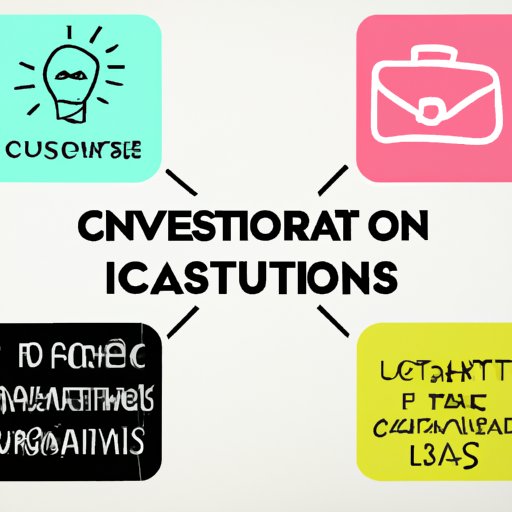Introduction
In today’s rapidly evolving world, innovation has become a key driver of success in every industry. From groundbreaking technological advancements to innovative business models, companies that foster a culture of creativity and embrace change are changing the game. This article aims to explore the fascinating world of innovation, providing insights into the innovation process, uncovering the principles that drive success, sharing real-life case studies, and equipping you with practical tools and techniques for fostering innovation. Get ready to embark on an exciting journey of ideas, impact, and transformation.
Exploring the Innovation Process: From Idea to Execution
At its core, the innovation process involves transforming an idea into a tangible and valuable outcome. To achieve this, innovation can be broken down into several distinct stages, each crucial to the overall journey:
Idea Generation
The first stage involves the generation of inventive ideas. This can be through brainstorming sessions, market research, or simply the result of creative thinking. The key here is to encourage diverse perspectives and unconventional thinking to uncover unique solutions.
Feasibility Analysis
Once ideas are generated, it is essential to assess their feasibility and potential impact. This stage involves conducting market research, analyzing customer needs, and evaluating the financial and technical viability of the ideas. This careful analysis helps prioritize ideas and identify those with the highest potential for success.
Prototyping
The prototyping stage brings ideas to life by creating tangible representations of the proposed solutions. This can involve the development of physical prototypes, mock-ups, or even virtual simulations, depending on the nature of the innovation. Prototyping allows for testing, iteration, and refinement of ideas before investing significant resources into implementation.
Testing
Testing is a critical step in the innovation journey, as it allows for validation of ideas and solutions. This stage involves gathering feedback from target users or a selected group of individuals who can provide insights and suggestions for improvements. Through iterative testing and refinement, the innovation becomes more aligned with user needs, increasing its chances of success.
Implementation
The final stage of the innovation process involves implementing the refined solution into the market or organization. This requires careful planning, resource allocation, and effective execution. Tracking and monitoring the results are essential to measure the impact of the innovation and make necessary adjustments if needed.
To navigate the innovation process successfully, there are key steps, tools, and strategies to consider at each stage. For example, idea generation can be facilitated through brainstorming sessions, design thinking methodologies, or even cross-functional collaboration. Similarly, prototyping can be streamlined with the help of rapid prototyping tools and techniques that allow for quick iteration and feedback. The overarching goal is to create an environment that encourages experimentation, learning, and continuous improvement.
Real-life examples and case studies can provide valuable insights into the innovation process. For instance, the story of how Airbnb disrupted the hospitality industry through their innovative platform showcases how an idea can be transformed into a global success. By understanding the innovation process and learning from real-world examples, individuals and organizations can replicate success and create their unique impact.
Unleashing Creativity: How to Foster a Culture of Innovation
One of the fundamental drivers of innovation is the presence of a supportive and nurturing culture. A culture of innovation fosters creativity, encourages risk-taking, promotes collaboration, and embraces continuous improvement. Creating such an environment lays the foundation for successful innovation. Here are some key elements:
Creative Thinking
A culture of innovation encourages individuals to think outside the box, challenge the status quo, and explore unconventional solutions. Creating space for creativity and providing opportunities for idea generation can unlock the potential for groundbreaking innovations.
Risk-taking
Innovation often involves uncertainty and risk. A culture that embraces risk-taking creates an environment where individuals feel empowered to experiment, learn from failure, and take calculated risks in pursuit of innovation. Celebrating failures as learning opportunities promotes a growth mindset and encourages individuals to push boundaries.
Collaboration
Great ideas often emerge from collaborative efforts. A culture that promotes collaboration breaks down silos and encourages cross-functional teams and knowledge-sharing. By harnessing the collective intelligence of teams, organizations can leverage diverse perspectives and expertise, leading to more innovative outcomes.
Continuous Improvement
Innovation is not a one-time event but an ongoing process. A culture of innovation emphasizes continuous improvement, constantly seeking ways to refine and enhance existing solutions. Encouraging individuals to challenge the status quo, embrace feedback, and iterate on ideas fosters a culture of innovation.
Building a culture of innovation requires deliberate effort and a proactive approach. Organizations can foster innovation culture by providing dedicated time and resources for creative activities, organizing innovation challenges and competitions, and recognizing and rewarding innovative achievements. By nurturing a culture that values creativity and innovation, organizations can unlock the potential for transformative growth.
Innovation 101: Understanding the Principles and Drivers of Innovation
Successful innovation is driven by a set of underlying principles that guide the decision-making process and strategic focus. By understanding these principles, individuals and organizations can cultivate a mindset conducive to innovation. Some fundamental principles include:
Identifying Customer Needs
The primary driver of innovation is the ability to identify and understand customer needs. By deeply understanding the pain points and desires of target customers, organizations can develop solutions that address these needs effectively. This customer-centric approach sets the foundation for successful innovation.
Leveraging Emerging Technologies
Technology is a powerful enabler of innovation. Monitoring and leveraging emerging technologies can unlock new possibilities and disrupt traditional industries. Understanding the potential of technologies such as artificial intelligence, blockchain, and the Internet of Things can open up new avenues for innovation.
Embracing Diversity and Inclusion
Diversity fuels innovation by bringing together a range of perspectives, experiences, and ideas. Embracing diversity and inclusion allows organizations to tap into the full potential of their workforce and create a culture that promotes creativity and innovation. Diverse teams bring fresh insights and alternative ways of thinking to the table, leading to more innovative outcomes.
Fostering a Learning Mindset
Innovation is about continuous learning and growth. Fostering a learning mindset encourages individuals to embrace new knowledge, seek out feedback, and adapt to changing environments. By fostering a culture that values learning and personal development, organizations create an environment conducive to innovation.
Staying Adaptable
Innovation thrives in environments that are adaptable and responsive to change. Organizations that can quickly adapt to emerging trends, market shifts, and disruptive forces are better positioned to innovate successfully. Agility and flexibility become key attributes in a rapidly changing world.
Understanding these principles enables individuals and organizations to align their strategies and decision-making processes with the drivers of successful innovation. By incorporating these principles into their innovation journey, organizations can increase their likelihood of success.

Case Studies in Innovation: Learning from the Success Stories
Real-life case studies offer valuable insights into successful innovation initiatives and highlight the transformative power of innovation. Let’s explore a few examples:
Case Study 1: Tesla
Tesla revolutionized the automotive industry by introducing electric vehicles (EVs) that offer high performance and environmental sustainability. By identifying the growing demand for EVs, Tesla disrupted a traditional market dominated by gasoline-powered cars. Their commitment to innovation, cutting-edge technologies, and forward-thinking design has propelled them to become a leader in sustainable transportation.
Case Study 2: Netflix
Netflix disrupted the home entertainment industry by introducing a subscription-based streaming platform. By leveraging emerging technologies and consumer insights, Netflix transformed the way people consume television and movies. They embraced digital innovation, personalized recommendations, and original content creation to deliver an unparalleled entertainment experience.
Case Study 3: Google
Google’s success story revolves around their commitment to innovation and their focus on user experience. By continuously refining and enhancing their search engine algorithms, Google has become the go-to search engine for billions of people worldwide. Their user-centric approach has expanded into other areas, including mobile technology, productivity tools, and autonomous vehicles.
These case studies demonstrate the value of innovation and the impact it can have on industries and society as a whole. They also underline the need for organizations to constantly challenge themselves, stay ahead of the curve, and embrace change to secure long-term success.
Innovation Tools and Techniques: Equipping Yourself for Success
Equipping yourself with the right tools and techniques can significantly enhance your ability to foster innovation. Here are some widely used tools and methodologies:
Design Thinking
Design thinking is a human-centered approach to problem-solving that emphasizes empathy, ideation, and experimentation. By understanding user needs and rapidly iterating on solutions, design thinking empowers individuals to create innovative and user-centric products, services, and experiences.
Lean Startup
The lean startup methodology emphasizes rapid experimentation, iterative development, and continuous learning. By testing assumptions, gathering customer feedback, and adjusting strategies accordingly, startups can build innovative products that meet market demand effectively while minimizing unnecessary investments and risks.
Brainstorming
Brainstorming is a creative technique that encourages individuals to generate a large number of ideas in a supportive environment. By promoting free thinking, suspending judgment, and encouraging quantity over quality, brainstorming sessions can unlock innovative solutions and spark new perspectives.
Rapid Prototyping
Rapid prototyping allows for quick and cost-effective creation of tangible representations of ideas. Through the use of 3D printing, modeling software, or even paper prototypes, rapid prototyping facilitates the iterative testing and refinement of ideas, accelerating the innovation process.
Continuous Experimentation
Continuous experimentation involves conducting small, low-risk experiments to test assumptions and gather data. By taking an agile and iterative approach to innovation, organizations can quickly learn from feedback, optimize their solutions, and make informed decisions based on real-world insights.
Understanding the applications and benefits of these tools and techniques enables individuals and organizations to adopt an innovation-driven mindset. Incorporating these methodologies into the innovation process enhances efficiency, stimulates creativity, and increases the chances of creating disruptive and transformative innovations.
Overcoming Innovation Barriers: How to Navigate Challenges and Spark Innovation
While innovation offers immense opportunities, it also comes with its fair share of challenges.
(Note: Is this article not meeting your expectations? Do you have knowledge or insights to share? Unlock new opportunities and expand your reach by joining our authors team. Click Registration to join us and share your expertise with our readers.)
